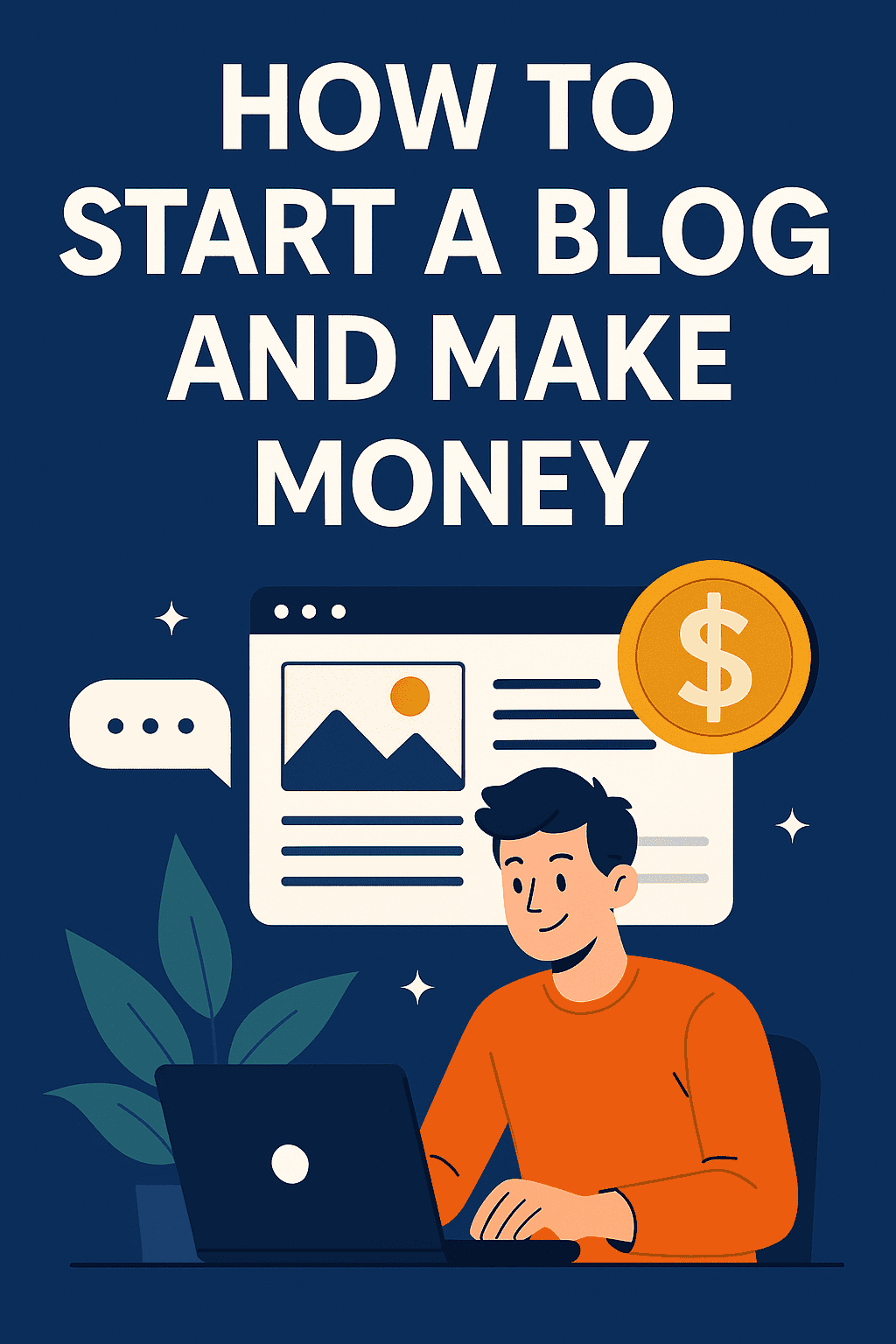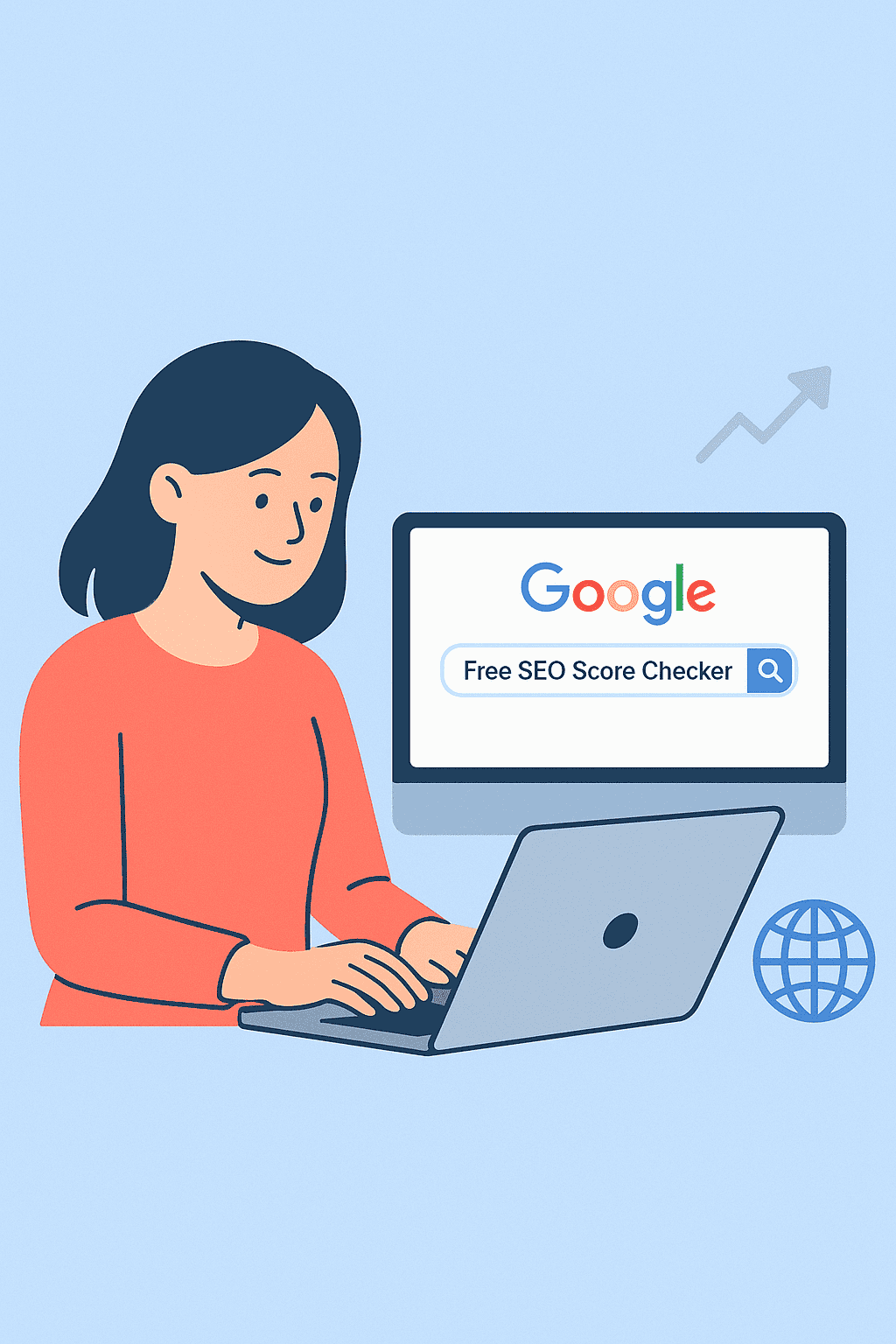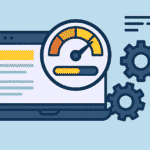How to Start a Blog and Make Money in 2025: Complete Beginner’s Guide
Blogging remains one of the most effective ways to build credibility, grow an engaged audience, and generate income online. Even with the rise of social media, blogs offer depth, SEO advantages, and evergreen value with the content you publish today can attract readers for years. If you’re serious about how to start a blog and make money, a blog provides a central hub where you own your audience, courses, affiliate offers, and brand. Blogs also outperform social platforms for search discoverability: users searching on Google are often ready to take action, whether buying, subscribing, or joining.
This guide walks you step-by-step through modern blogging essentials, from niche selection to monetization. By understanding how to start a blog and make money, you’re already ahead of many newbies who overlook long-term strategy. Over the next few paragraphs, I’ll reveal how easy it is to launch a blog optimized for growth with tools like WordPress and Rank Math, and how to scale it profitably in 2025.
1. Understanding What “Making Money” Really Means
Before diving into traffic tactics or content strategies, define what “making money” looks like for you. Some bloggers earn a few hundred dollars per month from ads or affiliates; others build six-figure businesses around courses and consulting. To learn how to start a blog and make money, clarity on goals is essential. Decide if you want passive income, full-time revenue, or part-time side income. Knowing this helps shape your niche, content type, and monetization choices as ad revenue favors high-traffic evergreen posts, while affiliate income may rely on comparison or review content.
Being realistic about your model also protects against burnout because late-night pivots are common when bloggers chase vague “make money” goals. Mapping out a 6- to 12-month plan gives context to everything else you’ll do from writing content to keyword targeting.

2. Choosing a Profitable and Passionate Niche
Your success hinges on picking a niche you care about and can monetize. Passion keeps you motivated, but profitability ensures rewards for your effort. Start by asking: what topics do you enjoy exploring? Which niches have affiliate products, digital tools, courses, or services? Identify search demand using Google Trends, Ubersuggest, or AnswerThePublic. For instance, fitness, finance, DIY crafts, or digital marketing often generate affiliate opportunities. Niche combos, such as sleep coaching for new parents or sustainable fashion, stand out too.
This balance is key if you want to know how to start a blog and make money without losing interest. Validate niche ideas by checking Amazon and affiliate programs for commission rates. Once you settle on a niche, brainstorm 20–30 post ideas before launching—this ensures consistency and SEO optimization from day one.
3. Keyword Validation and Market Demand
To truly learn how to start a blog and make money, you need to focus on keyword-rich content that solves problems. Use tools like Ubersuggest to check monthly search volume and competitiveness. Look for long-tail keywords like “best DSLR camera for blogging” or “how to pack laptop for travel.” These are easier to rank than generic keywords and attract ready-to-buy audiences. Check the top 10 Google results—are they strong, well-optimized posts? If not, you’ve got a window to outrank them.
Build a spreadsheet of 50–100 validated keywords with metrics and target SERPs, and use this sheet to schedule content. Using such a keyword-first content plan is essential if you’re serious about how to start a blog and make money.
4. Selecting WordPress for Maximum Flexibility
Choosing WordPress.org is a smart first step when you learn how to start a blog and make money. It’s free, highly customizable, and SEO-friendly. You retain full ownership of content, unlike hosted platforms. It’s supported by top plugins—like Rank Math, which handles SEO, schema, and sitemaps—and integrates easily with email services. If you’re not technically inclined, check out our companion guide: How to Create a Website Without Any Computer Knowledge, this shows how simple setup can be. Whatever you choose, make sure your blogging platform allows you to scale, monetize, and customize—key criteria in learning how to start a blog and make money.
5. Choosing Fast, Reliable Hosting
Your next priority is speed. Fast hosting underpins every aspect of your roadmap for how to start a blog and make money—affecting SEO, user experience, and revenue. I recommend providers that offer SSD servers, strong uptime SLAs, and built-in caching. The best one that I recommend is Hostinger that offers the most comprehensive packages. For a detailed breakdown of speed-optimized hosts, see our comparison: Fastest WordPress Hosting for Website. Quality hosting provides the foundation for monetization—ads perform better, affiliate links get more clicks, and users stay longer. As you learn how to start a blog and make money, prioritize a host that invests in performance. Shared hosting is fine to start, but plan to upgrade when traffic hits 5,000+ monthly visits.
6. Installing WordPress: Settings You Must Set
After purchasing hosting, install WordPress and complete these essential steps immediately:
- Set Permalink Structure to “Post Name” under Settings → Permalinks (important for SEO).
- Configure site title and tagline in Settings → General to reflect your niche.
- Install a caching plugin (LiteSpeed or WP Rocket) to optimize page loading.
- Secure your site with an SSL certificate—most hosts include it free.
- Add a backup plugin like UpdraftPlus to protect important content as you learn how to start a blog and make money.
These setup tasks streamline your blog’s performance, security, and growth potential—a core part of building a blog with lasting revenue.
7. Choosing a Fast and SEO-Optimized Theme
Once WordPress is installed, the next important decision in your blogging journey is selecting the right theme. A lightweight, responsive, and SEO-friendly theme plays a crucial role in determining whether your blog loads quickly and ranks well in search engines. When learning how to start a blog and make money, the theme you choose is more than just visual—it directly affects user experience, bounce rates, and even ad performance. I recommend Kadence, Astra, or GeneratePress—each offers speed optimization, customizable layouts, and compatibility with Rank Math SEO.
A bloated theme slows down your site, hurting Core Web Vitals, which can negatively impact Google rankings. If your niche is visually focused, consider themes that support high-resolution images without sacrificing speed. A clean, minimalist layout also keeps your readers focused on the content, which is essential for affiliate link clicks and ad engagement. Make sure your theme is mobile-responsive since over 60% of users browse via smartphones in 2025.
8. Must-Have Plugins for SEO and Performance
Plugins bring functionality to your blog, and when used wisely, they’re a powerful tool in your mission to learn how to start a blog and make money. First, install Rank Math SEO—it helps you add meta titles, focus keywords, schema markup, and more. Next, use WP Rocket or LiteSpeed Cache for speed optimization and caching. For image optimization, ShortPixel is an excellent choice that compresses images without compromising quality.
A backup plugin like UpdraftPlus will automatically save your data, preventing catastrophic content loss. I also recommend using Site Kit by Google to connect Google Analytics and Search Console with a few clicks. Lastly, install a security plugin like Wordfence to protect your site from malware and brute force attacks. Keep your plugin count under 20 to avoid bloat and conflicts. Smart plugin choices are a cornerstone in figuring out how to start a blog and make money the efficient way.
9. Writing Blog Posts That Rank
Learning how to write content that ranks is one of the most important parts of how to start a blog and make money. Start with keyword research, and once you have a target keyword, make sure it appears in the title, meta description, first 100 words, and throughout the content naturally. Structure your post using H2 and H3 headings, use short paragraphs, bullet points, and include internal links to related posts—such as our detailed guide on How to Get Your Website to Appear in Search Engines.
End your post with a strong call-to-action, such as encouraging readers to sign up for your email list or check out a related article. High-quality content that solves a problem, supported by SEO best practices, increases your chances of ranking and earning passive income over time.
10. Understanding SEO Basics
Search Engine Optimization (SEO) is the engine behind traffic and revenue. If you’re serious about learning how to start a blog and make money, you must master basic on-page SEO. This includes optimizing title tags with your focus keyword at the beginning, writing compelling meta descriptions that encourage clicks, and using internal links to distribute link equity. Use your focus keyword in the URL, alt texts for images, and at least once every 150–200 words. Avoid keyword stuffing—Google is smart.
Create content that is readable, valuable, and organized. Install the Rank Math plugin and follow its checklist for each post. Technical SEO like XML sitemaps, robots.txt files, and schema markup are important, but the basics are non-negotiable. Without SEO, even the most amazing content will remain hidden. Combine strong on-page SEO with great content and a fast site, and you’ll start to see traction.
11. Keyword Research Made Simple
Keyword research helps you write what people are already searching for, which is crucial when discovering how to start a blog and make money. Begin with tools like Google Autosuggest, Ubersuggest, and AnswerThePublic. Type in your niche topics and see what questions pop up—these are content goldmines. Long-tail keywords like “best travel backpack for moms” are easier to rank for and attract targeted visitors. Create a spreadsheet of 100+ keywords categorized by intent—informational, commercial, or transactional.
Each blog post should target one main focus keyword and a few related secondary keywords. Also check what your competitors are ranking for using tools like Ahrefs or SEMrush. Use those insights to fill gaps and write better versions. Keyword research isn’t something you do once—it’s ongoing and becomes the foundation of your content calendar. Remember, blogging without keyword strategy is like throwing darts blindfolded and hoping to hit the bullseye.
12. Optimizing Posts with Rank Math
Once your content is ready, it’s time to optimize with Rank Math. This free SEO plugin gives you a checklist of on-page SEO tasks to complete. Add your focus keyword in the SEO title, meta description, URL slug, intro paragraph, and at least one subheading. Use the schema generator to add FAQ blocks and article metadata. Ensure your content has internal links to related articles—for example, from a post about email marketing to one about Affiliate Marketing for Beginners.
You’ll also want to preview how your post looks in Google and edit snippets accordingly. If your Rank Math score is under 80, revise until it turns green. Schema markup boosts your chances of rich results like star ratings or FAQ drop-downs. If you’re serious about learning how to start a blog and make money, Rank Math is your best free tool for optimizing visibility.
13. Growing Your Audience via Social Media
Social media can rapidly amplify your blog’s reach if used correctly. Focus on platforms where your target audience spends the most time. If you’re in fashion, Pinterest and Instagram are key. For tech, Twitter and LinkedIn perform better. Share blog posts in Facebook groups, create reels or carousel posts on Instagram, and write short value-packed threads on X (formerly Twitter). Mention your focus keyword in social bios and link to your blog’s homepage.
Use tools like Buffer or Later to schedule posts, and repurpose blog content into bite-sized social content. Add share buttons using plugins like Grow by Mediavine to encourage social sharing. Social proof builds trust—so regularly post wins, testimonials, or user feedback. A consistent social presence builds authority and traffic, essential ingredients if you’re aiming to learn how to start a blog and make money in 2025 and beyond.
14. Using Pinterest for Blog Traffic
Pinterest is not just a platform for recipes and home decor—it’s a visual search engine, and one of the best platforms for sending evergreen traffic to your blog. Create vertical pins using Canva and optimize your pin titles and descriptions with focus keywords. Link each pin directly to a relevant blog post. Pinterest boards act like blog categories, so name them using searchable phrases like “Blogging for Beginners” or “Passive Income Ideas.” When figuring out how to start a blog and make money, Pinterest gives you a long-term traffic boost for minimal ongoing effort.
Use Tailwind to schedule pins and loop high-performing ones. It’s especially effective for niches like travel, parenting, DIY, and personal finance. Don’t forget to claim your website on Pinterest and install rich pins for better click-through rates. Even a single viral pin can drive thousands of new visitors to your site.
15. Building an Email List from Day One
Starting an email list early is one of the smartest moves when figuring out how to start a blog and make money in 2025. Unlike social media platforms, your email list is an asset you own. Platforms like ConvertKit, MailerLite, and Brevo (formerly Sendinblue) offer free plans for beginners. To get people to sign up, offer a lead magnet like a free checklist, a mini email course, or an exclusive guide related to your niche. For instance, if your blog is about smart living, you could offer a downloadable “Home Energy Audit Checklist” like we do on The Watt Advisor.
Embed signup forms across your site—sidebar, homepage, footer, and within blog posts. Use pop-ups, but make sure they’re not intrusive. As your list grows, segment it based on interests, and send personalized emails. Email marketing helps drive repeat traffic and affiliate sales, key to growing a profitable blog.

16. How to Monetize Your Blog in 2025
Once you start generating consistent traffic, it’s time to monetize. One of the first ways most bloggers earn is through affiliate marketing—by recommending products and earning a commission. Sign up for networks like Amazon Associates, Impact, ShareASale, or CJ Affiliate. Include affiliate disclosures for compliance. You can also monetize with display ads through Google AdSense, Ezoic, or Mediavine (when you reach their traffic threshold). Other options include offering sponsored posts, writing ebooks, selling digital products, or launching online courses.
Many bloggers also sell their own services like coaching or consulting. The key to success in learning how to start a blog and make money is diversification. Don’t rely on just one income stream—combine multiple methods and test what works best for your audience. Track earnings and traffic in Google Analytics and your affiliate dashboards to optimize results.
17. Affiliate Marketing for Beginners
Affiliate marketing is hands-down one of the most beginner-friendly and profitable ways to earn from blogging. Start by joining reputable networks and selecting products that align with your niche and audience’s needs. If you blog about tech or WordPress, you can include links to hosting services or plugins, just like we do in our Fastest WordPress Hosting Guide. Place affiliate links naturally in blog posts, tutorials, or product comparisons. Use tracking tools like ThirstyAffiliates to cloak and manage your links. Be transparent with your readers—always disclose affiliate partnerships.
And don’t just drop links—explain why you recommend something, add reviews, and include screenshots. Write SEO-optimized posts like “Best VPNs for Online Privacy” or “Top Budget Travel Backpacks”—these are known as high-converting content types. Mastering affiliate marketing is essential if you want to succeed in how to start a blog and make money sustainably.
18. Display Ads and Earning with RPM
Display ads are a great way to generate passive income once your blog starts attracting consistent traffic. RPM stands for Revenue Per Mille (per thousand views), and it varies depending on your niche and geographic traffic. For example, blogs targeting U.S. readers in finance or health tend to earn higher RPMs. Beginners can start with Google AdSense, but platforms like Ezoic or Mediavine offer much better earnings once you meet their entry requirements.
The speed and layout of your blog affect your ad performance—so make sure you follow our tips in Website Speed Optimization. Use ads strategically—place them in the sidebar, between content, and after paragraphs. Avoid overloading your site, as too many ads can slow down loading and frustrate users. Display ads won’t make you rich overnight, but they’re a great addition to your blog’s income portfolio.
19. Selling Digital Products from Your Blog
Another powerful way to monetize is by creating and selling digital products. These include ebooks, templates, printables, courses, and memberships. The beauty is you create the product once and sell it over and over. Use tools like Canva for design, Gumroad or Podia for hosting, and WooCommerce if you want to sell directly on your WordPress site. For instance, if you’ve built a solid email list and traffic base, you can sell a digital product like “30-Day Blog Launch Checklist” or “Ultimate Pinterest Strategy Guide.”
If your readers trust your expertise, they’re far more likely to buy from you. Combine this with email marketing funnels to increase conversions. Selling digital products offers better margins than affiliate marketing or ads and allows full control. It’s an essential strategy in your journey of how to start a blog and make money.
20. Common Blogging Mistakes to Avoid
Many beginners make avoidable mistakes when learning how to start a blog and make money. One of the biggest is not treating your blog like a business—ignoring analytics, skipping keyword research, and inconsistent posting. Others include using free platforms like WordPress.com instead of self-hosting, choosing slow hosting, and writing without SEO in mind. Overloading your blog with ads too early or choosing an unprofitable niche are other pitfalls.
Not having a clear monetization plan, ignoring email list building, and failing to promote posts are also common errors. Don’t copy others—find your unique voice. Avoid neglecting mobile responsiveness, poor grammar, or slow-loading pages. Learn from these missteps early, and you’ll avoid months of wasted effort. Stay focused, invest time in learning SEO, and always aim to provide real value to your readers.
21. Final Thoughts: Consistency is Key
The secret to successful blogging isn’t just great content or SEO—it’s consistency. When you’re figuring out how to start a blog and make money, treat it like a long-term business, not a hobby. Publish at least one high-quality post every week. Engage with your audience, update old content, and experiment with monetization strategies. Track your analytics, set realistic goals, and celebrate small wins. Blogging isn’t an overnight success story. But with persistence, you’ll build authority, grow traffic, and eventually turn your blog into a real income source. The blogging landscape in 2025 is competitive but full of opportunity. Stay consistent, keep learning, and don’t give up—because every successful blogger once stood exactly where you are now.
This post was on How to Start a Blog and Make Money in 2025: Complete Beginner’s Guide







